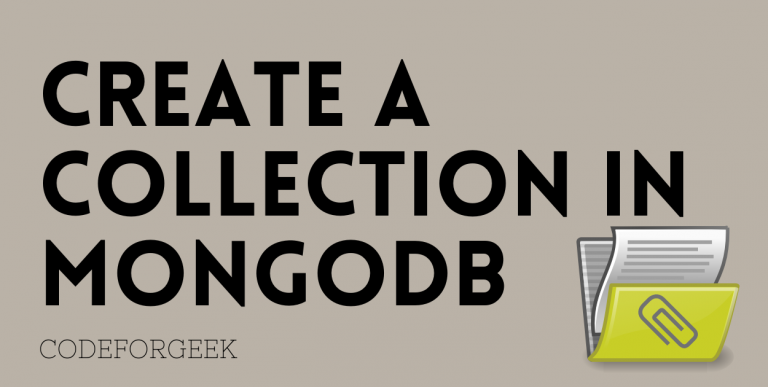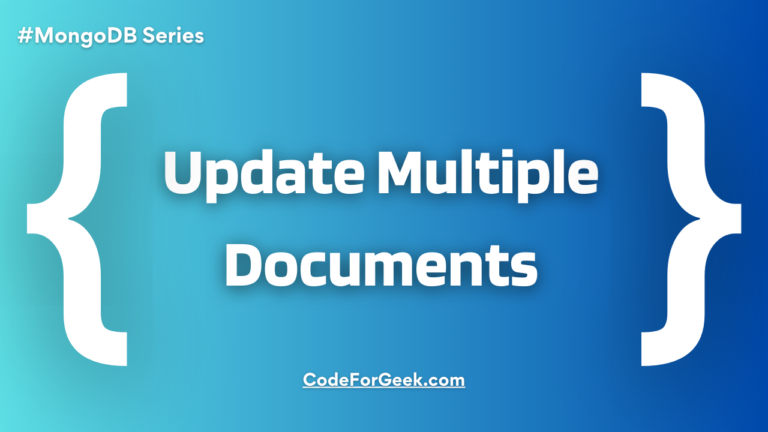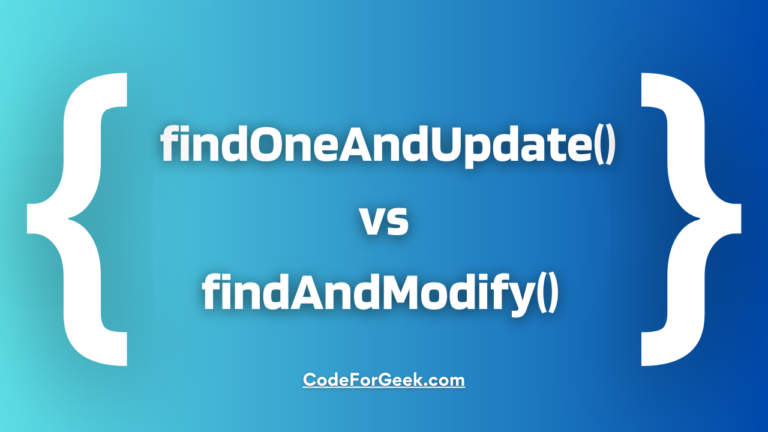In this tutorial, I will explain how you can create a collection in MongoDB. This guide shall walk you through different examples to create collections in MongoDB and the different code samples
The createCollection() Syntax to Create a Collection in MongoDB
db.createCollection( name,
{
capped: boolean,
timeseries: { // Added in MongoDB 5.0
timeField: string, // required for time series collections
metaField: string,
granularity: string
},
expireAfterSeconds: number,
autoIndexId: boolean,
size: number,
max: number,
storageEngine: document,
validator: document,
validationLevel: string,
validationAction: string,
indexOptionDefaults: document,
viewOn: string, // Added in MongoDB 3.4
pipeline: pipeline, // Added in MongoDB 3.4
collation: document, // Added in MongoDB 3.4
writeConcern: document
}
)
The function has many options tied to it and allows us to create collections, capped collections, etc. Let’s look into this function in more detail.
What is a Capped Collection in MongoDB?
A capped collection in MongoDB is a collection that stores a fixed number of documents inside it and overwrites old documents with new entries every time the size limit exceeds.
To create a capped collection in MongoDB, we must set the capped option as true and also specify a minimum size of the collection in bytes by setting a value in the size option. We can also mention the minimum number of documents a capped collection can hold inside itself by setting a value for the max option.
What is a Time Series Collection?
A time-series collection is simply a collection that holds documents for a given period of time and later deletes them. We can set the expireAfterSeconds option to specify how long after should a collection be deleted after it is expired.
Using createCollection() to Create a Collection in MongoDB
The steps to create a collection in MongoDB have been made simpler with the help of the createCollection() function. Let us look at different examples so we can create a regular collection, a capped collection, a time-series collection, and a collection with document validation in MongoDB inside the mongo shell.
Creating a Regular Collection in MongoDB
Let us learn how we can create a regular collection in MongoDB from the mongo shell.
- Start the MongoDB local database server
- List out all the available databases and navihate to the one you want to create a collection in MongoDB
show dbs
use random
- Now list out all the available collections before you proceed to check what all collections you have:
show tables
or
show collections
- To create a collection we will now take help of the createCollection() function without any options:
> db.createCollection(`randomCollection`)
{ "ok" : 1 }
> show tables
randomCollection
We have created a regular collection successfully!
Creating a Capped Collection in MongoDB
Let us start with our example to create a capped collection in MongoDB. To create a collection in MongoDB that is capped, we must set a value for the capped option. I will also set values for the max and size options.
> db.createCollection("randomCappedCollection", { capped : true, size : 9999999, max : 8000 } )
{ "ok" : 1 }
> show tables
randomCappedCollection
randomCollection
You can now see that we have a capped collection created for us.
Creating a Time Series Collection in MongoDB
Let us create a time series collection in MongoDB and take a look at its example on how to create one.
db.createCollection(
"cryptoPrices",
{
timeseries: {
timeField: "timestamp",
metaField: "data",
granularity: "hours"
},
expireAfterSeconds: 14400
}
)
{ "ok" : 1 }
> show tables
cryptoPrices
randomCappedCollection
randomCollection
We have created our first time-series collection in MongoDB that stores data every 4 hours.
Creating a Collection in MongoDB with Document Validation
Now, we will learn how to create a collection with document validation in MongoDB. The function now accepts a $jsonSchema operator in MongoDB to support JSON Schema validation.
I have borrowed this excellent example from MongoDB Docs to demonstrate it to you:
db.createCollection( "contacts", {
validator: { $jsonSchema: {
bsonType: "object",
required: [ "phone" ],
properties: {
phone: {
bsonType: "string",
description: "must be a string and is required"
},
email: {
bsonType : "string",
pattern : "@mongodb\.com$",
description: "must be a string and match the regular expression pattern"
},
status: {
enum: [ "Unknown", "Incomplete" ],
description: "can only be one of the enum values"
}
}
} }
} )
- We now have a document validator that will analyze and validate our documents before inserting new ones. Let us insert an invalid document to see what error we see:
db.contacts.insert( { name: "Amanda", status: "Updated" } )
WriteResult({
"nInserted" : 0,
"writeError" : {
"code" : 121,
"errmsg" : "Document failed validation"
}
})
Here’s what the result looks like when we try to create a collection in MongoDB that doesn’t pass the document validation test.
Read More: How to Implement Continuous Documentation for Your Developers Team
Conclusion
In this article, we learned to create a collection in MongoDB with the help of the different examples above. Create a regular collection, capped collection, time-series collection, and even a collection with document validation!





